Judging from the scenic views of the Hogwarts castle grounds to the little details in the halls and common rooms, Hogwarts Legacy is a demanding game. But don’t you worry, my fellow wizarding world lover, I’ve come up with some of the Hogwarts Legacy best settings for PC to help you retain those graphics while attaining decent FPS.
I’ve tested Hogwarts Legacy on the following PC specifications:
- CPU: Core-i5 12400f
- GPU: RTX 4070
- RAM: 16GB DDR4
- Storage: 2.5TB SSD
- Operating System: Windows 11 Pro
At a minimum, you’ll need an Intel i5-6600 or AMD Ryzen 5 1400 CPU, NVIDIA GTX 960 or AMD RX 470 GPU, and 16 GB of RAM to run Hogwarts Legacy on your PC.
According to my testing, the following settings tax your FPS the most:
- Material Quality
- Fog Quality
- Foliage Quality
- Post-Process Quality
- Shadow Quality
- View Distance Quality
- Population and View Distance
- All Ray Tracing Options
Hogwarts Legacy has a major memory management problem which results in performance degradation over time. The game performed well initially but then the FPS dropped from 75 to a single-digit figure while playing for ~30 minutes. This degradation also made textures glitchy for me which was quite weird. These issues were also discussed in detail in Asad Ahmed’s review of Hogwarts Legacy.
Hogwarts Legacy Best Graphics Settings

I’ve tested the game thoroughly on several different setting combinations and found the following to be a perfect balance between good visuals and performance.
Let’s go over the best display options for Hogwarts Legacy quickly.
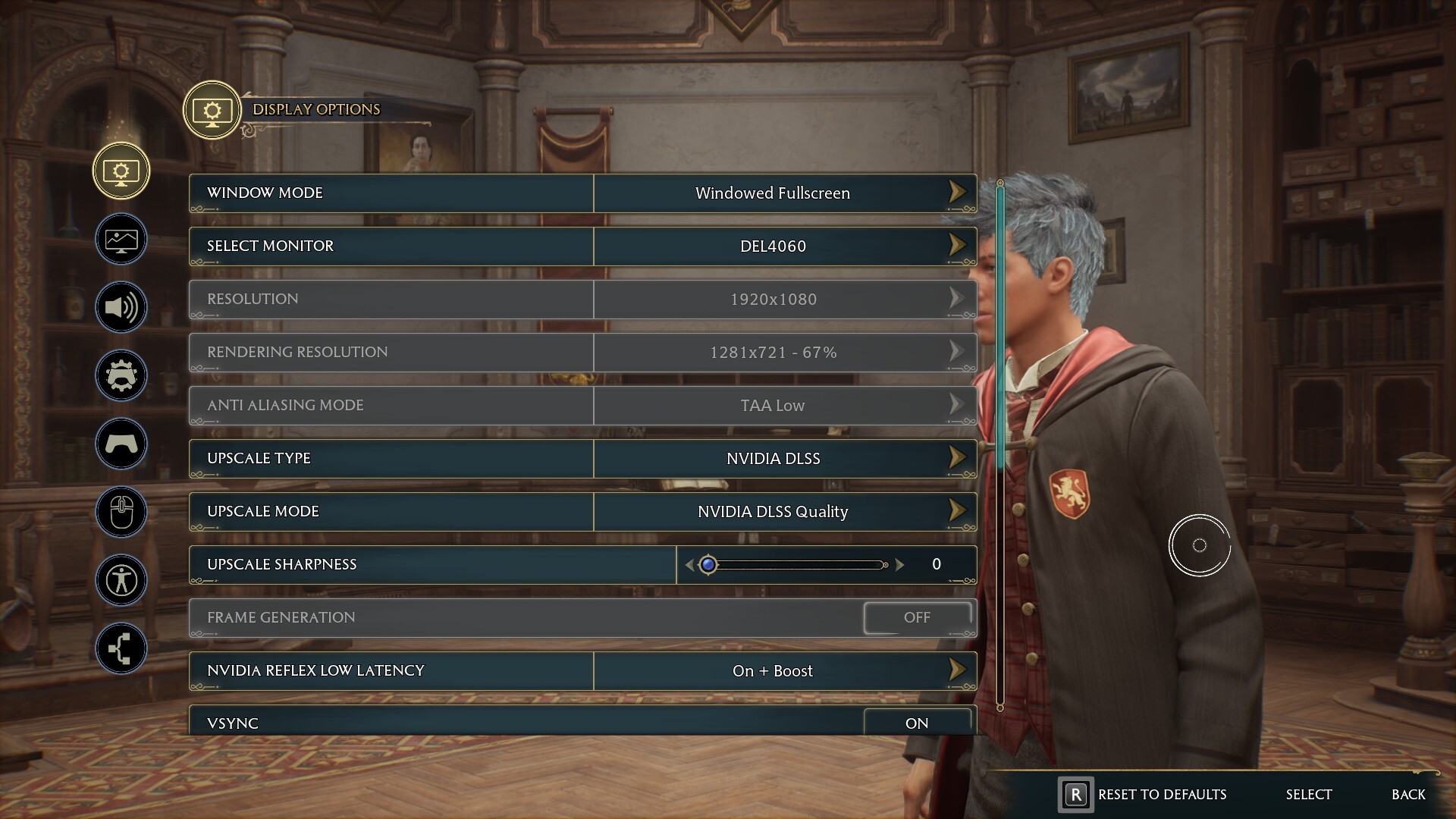
An Overview of Display Options in Hogwarts Legacy
| Windowed Mode | Windowed Fullscreen |
| Anti-Aliasing Mode | TAA – High |
| Upscaling Type | DLSS / FSR 2 |
| Upscale Mode | Balanced |
| Frame Generation | On |
| Nvidia Reflex Low Latency | On+ Boost |
| VSYNC | Off |
| Framerate | No Limit |
| Field of View | Personal Preference |
| Motion Blur | Off |
| Depth of Field | On |
| Chromatic Aberration | Off |
| Film Grain | Off |
| Select GPU | Select Main GPU |
Now, I’ll be going over the main graphics settings in detail.
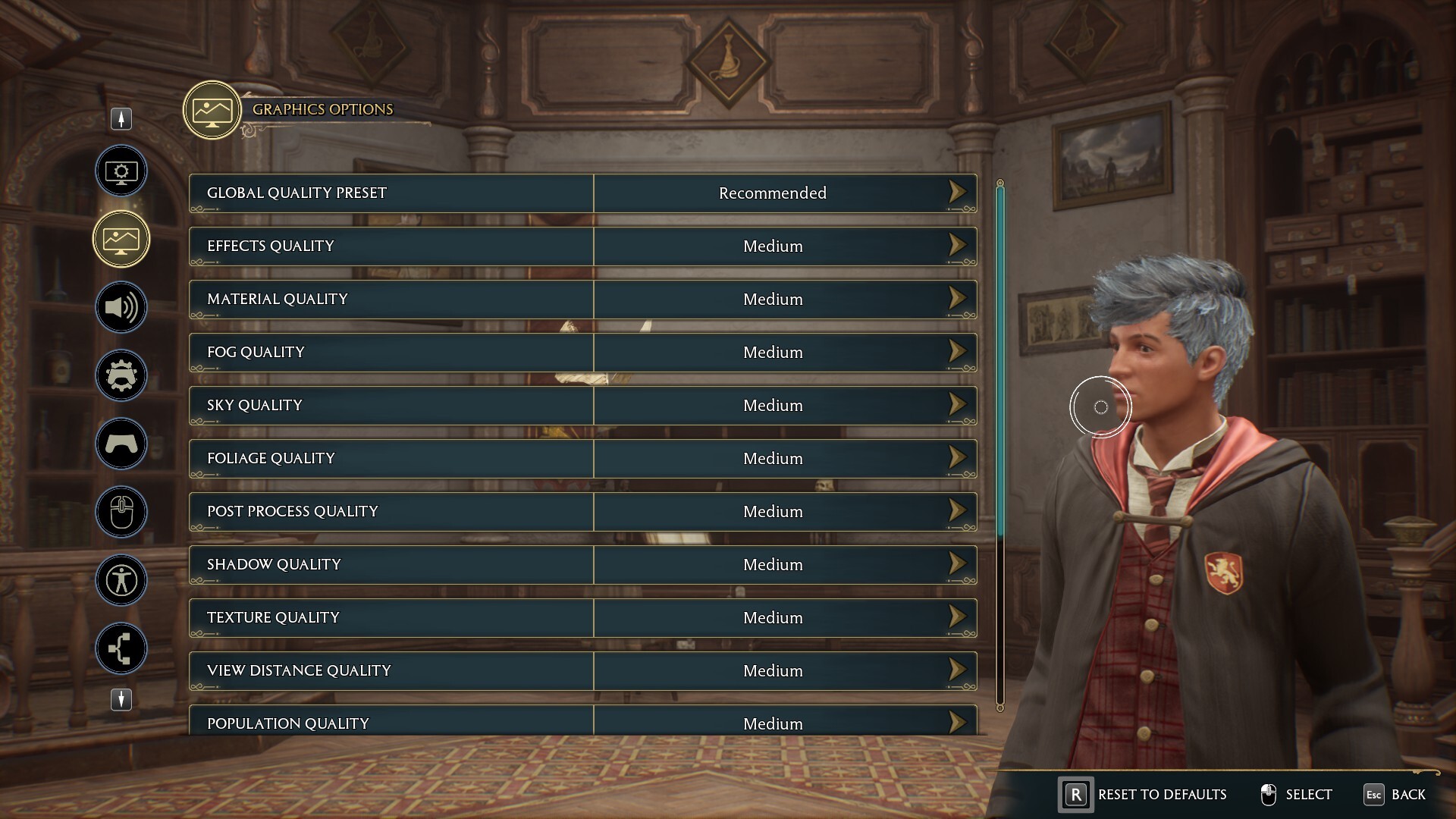
Summary of Graphics Options
| Global Quality Preset | Custom |
| Effects Quality | Medium |
| Material Quality | Low |
| Fog Quality | Low |
| Sky Quality | Medium |
| Foliage Quality | Medium |
| Post-Process Quality | Low |
| Shadow Quality | Low |
| Texture Quality | According to GPU’s Vram |
| View Distance Quality | Medium |
| Population Quality | Medium |
| Ray Tracing Reflections | Off |
| Shadows | Off |
| Ambient Occlusion | Off |
| Ray Tracing Quality | Disabled |
Global Quality Preset: Custom
Leave this at “Custom” since you’ll be adjusting individual settings.
Effects Quality: Medium
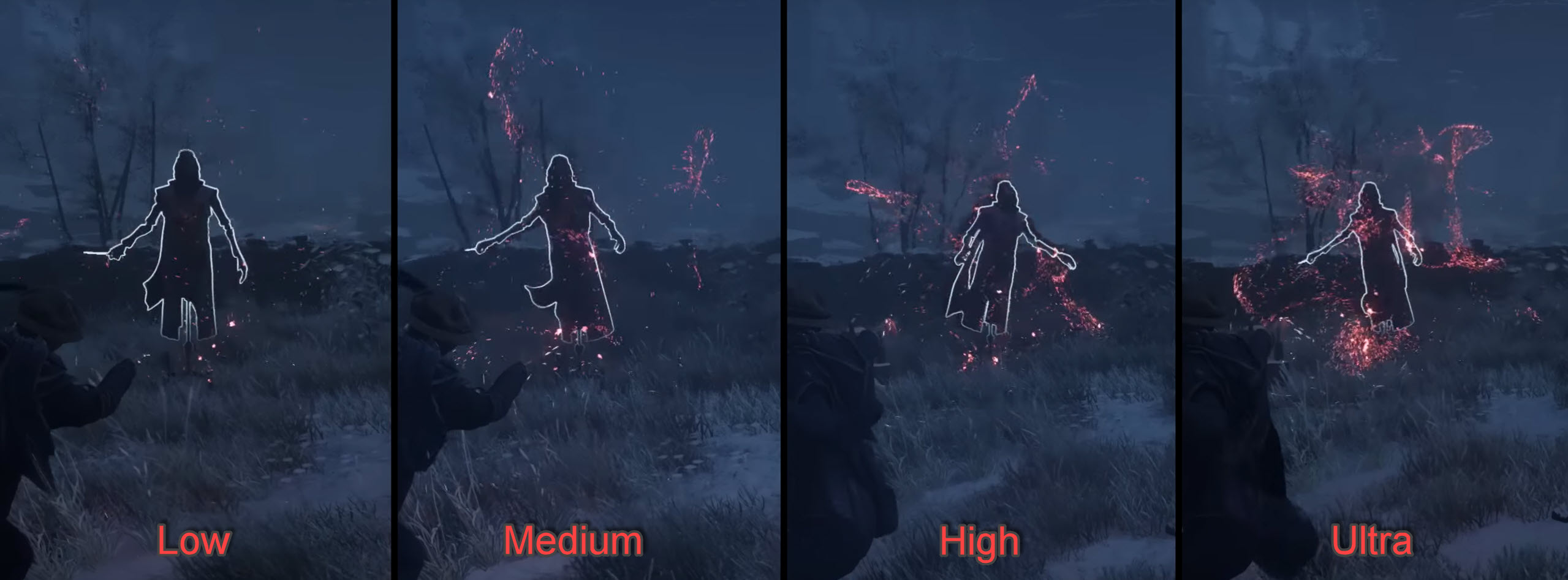
Medium offers a good balance between visual quality and performance.
Material Quality: Low

Lowering this setting provides a significant FPS boost while still maintaining reasonable visual quality.
Fog Quality: Low
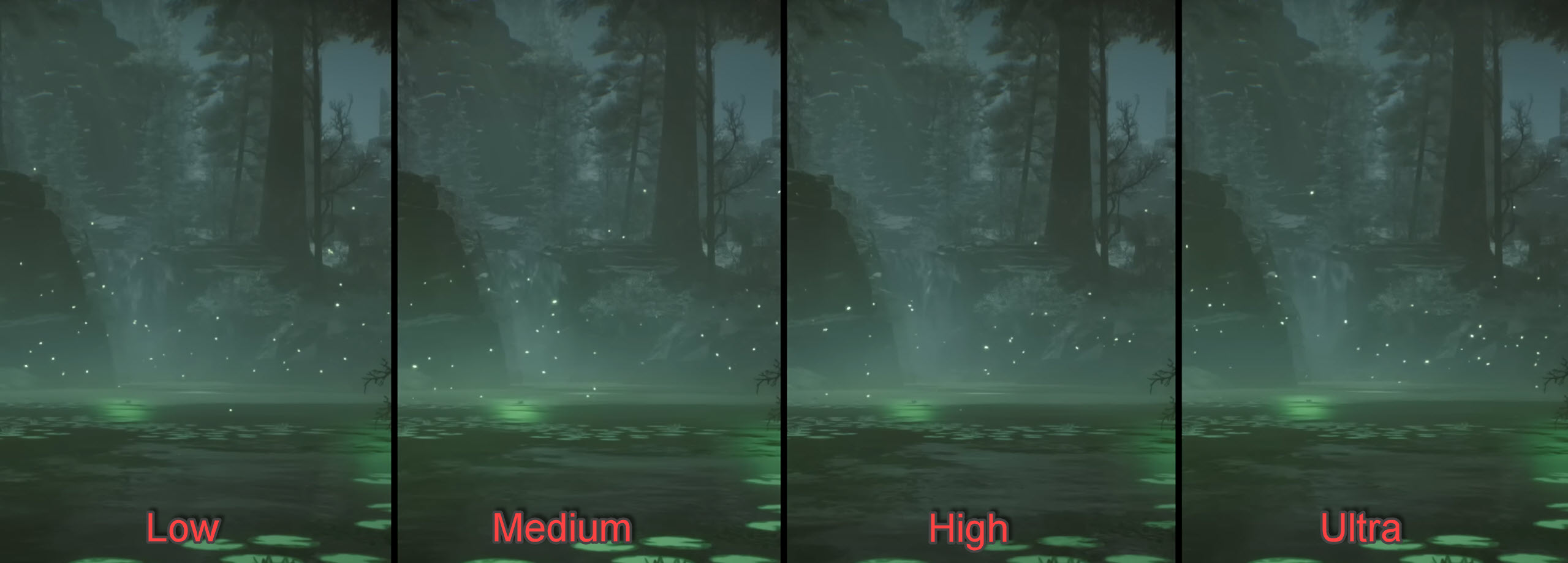
Set it to “Low” for improved performance with minimal impact on visuals.
Sky Quality: Medium
“Medium” is a good choice, as it affects clouds but doesn’t significantly impact gameplay.
Foliage Quality: Medium

Opt for “Medium” to strike a balance between visuals and performance, especially in forested areas.
Post-Process Quality: Low
Keep this setting at “Low” since motion blur and chromatic aberration are already disabled.
Shadow Quality: Low

Even at “Low,” shadows in Hogwarts Legacy look good and won’t heavily affect performance.
Texture Quality: Adjust according to GPU VRAM
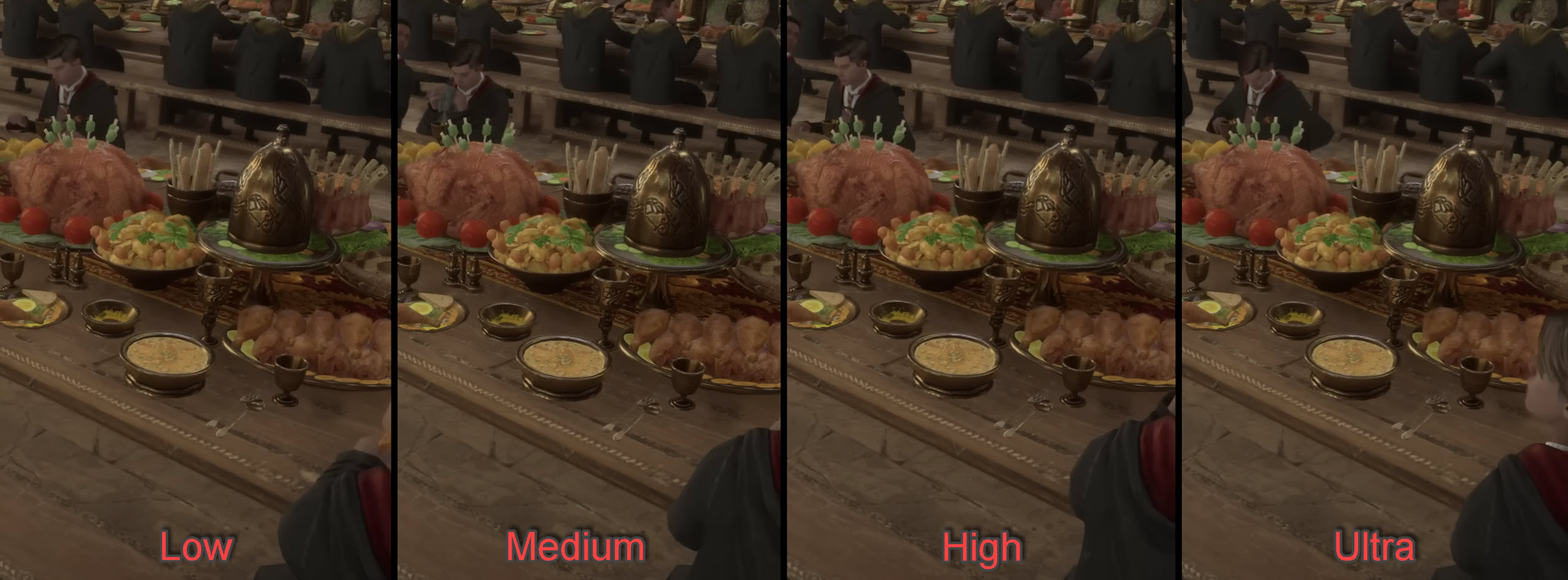
Choose a texture quality based on your GPU’s VRAM: Low (4GB VRAM), Medium (6GB VRAM), High (8GB VRAM), or Ultra (8GB+ VRAM).
View Distance Quality: Medium
“Medium” strikes a balance between performance and reducing texture pop-ins.
Population Quality: Medium
Leave it at “Medium” for a decent crowd without a significant FPS hit.
Ray Tracing Reflections, Shadows, Ambient Occlusion: OFF
Disable all Ray Tracing features to maximize performance.
Ray Tracing Quality: Disabled
This option should already be disabled since you’ve turned off Ray Tracing effects.
We’ve finally applied the Hogwarts Legacy best settings in the game’s graphics options. These will help you tremendously in solving issues like FPS drops and stuttering.
Best Nvidia Settings for Hogwarts Legacy
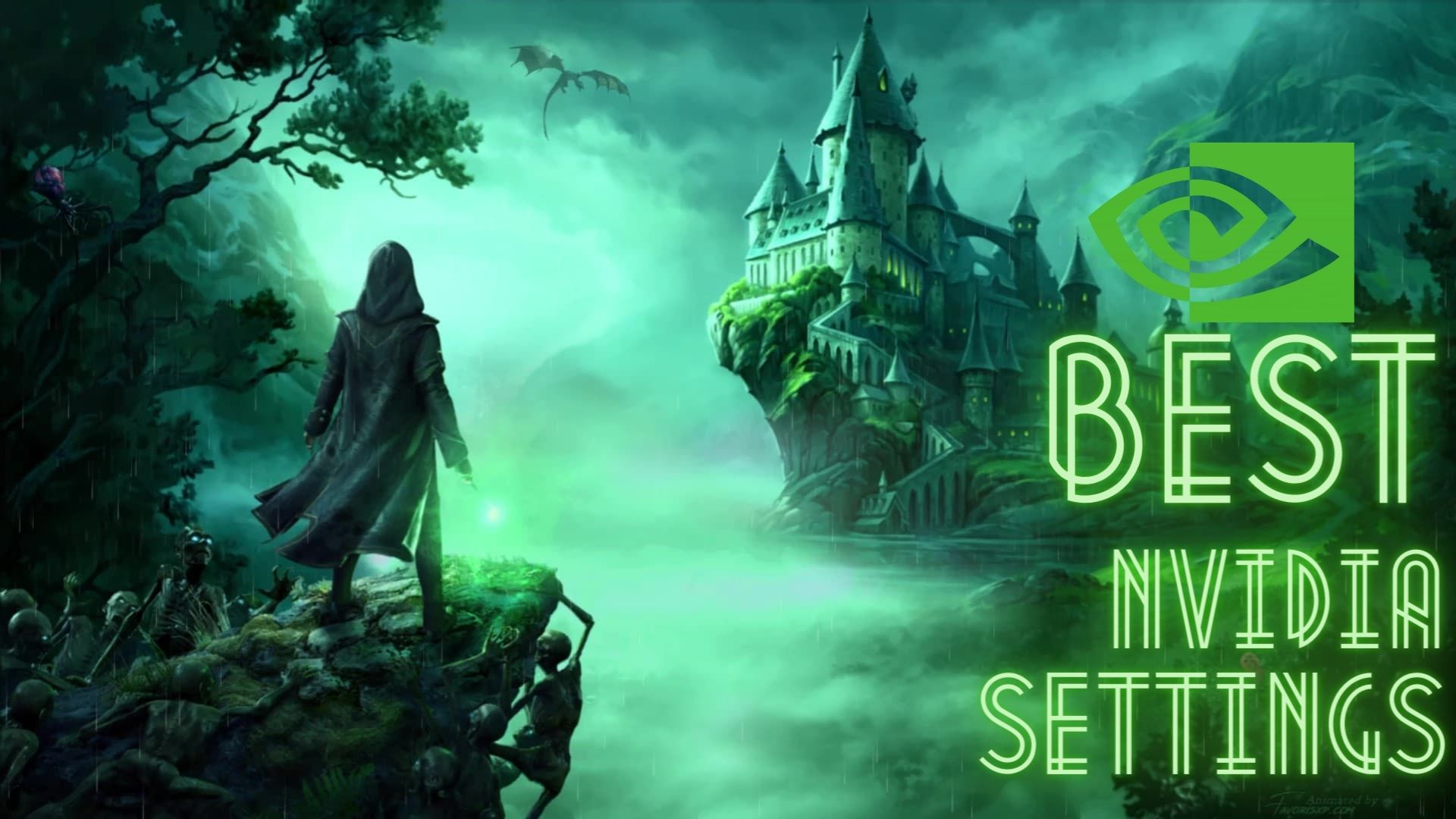
After optimizing the in-game settings for Hogwarts Legacy, we’ll be configuring the best Hogwarts Legacy settings in the Nvidia Control Panel. Nvidia Control Panel has tons of settings in it that will give you a surprising boost in performance
Nvidia Settings For Hogwarts Legacy Summarized:
| Image Sharpening | Off |
| Background Max Frame Rate | 20 |
| Low Latency Mode | Off |
| Max Frame Rate | Off |
| Power Management Mode | Prefer Max Performance |
| Anisotropic Sample Optimization | On |
| Texture Filtering | On |
| Quality – Texture Filtering | High Performance |
| Trilinear Optimization – Texture Filtering | On |
| Vertical Sync | Off |
Although we’ve covered only the essential settings above, if you want a complete guide, you can check out our best Nvidia Control Panel settings guide.
Best AMD Settings for Hogwarts Legacy
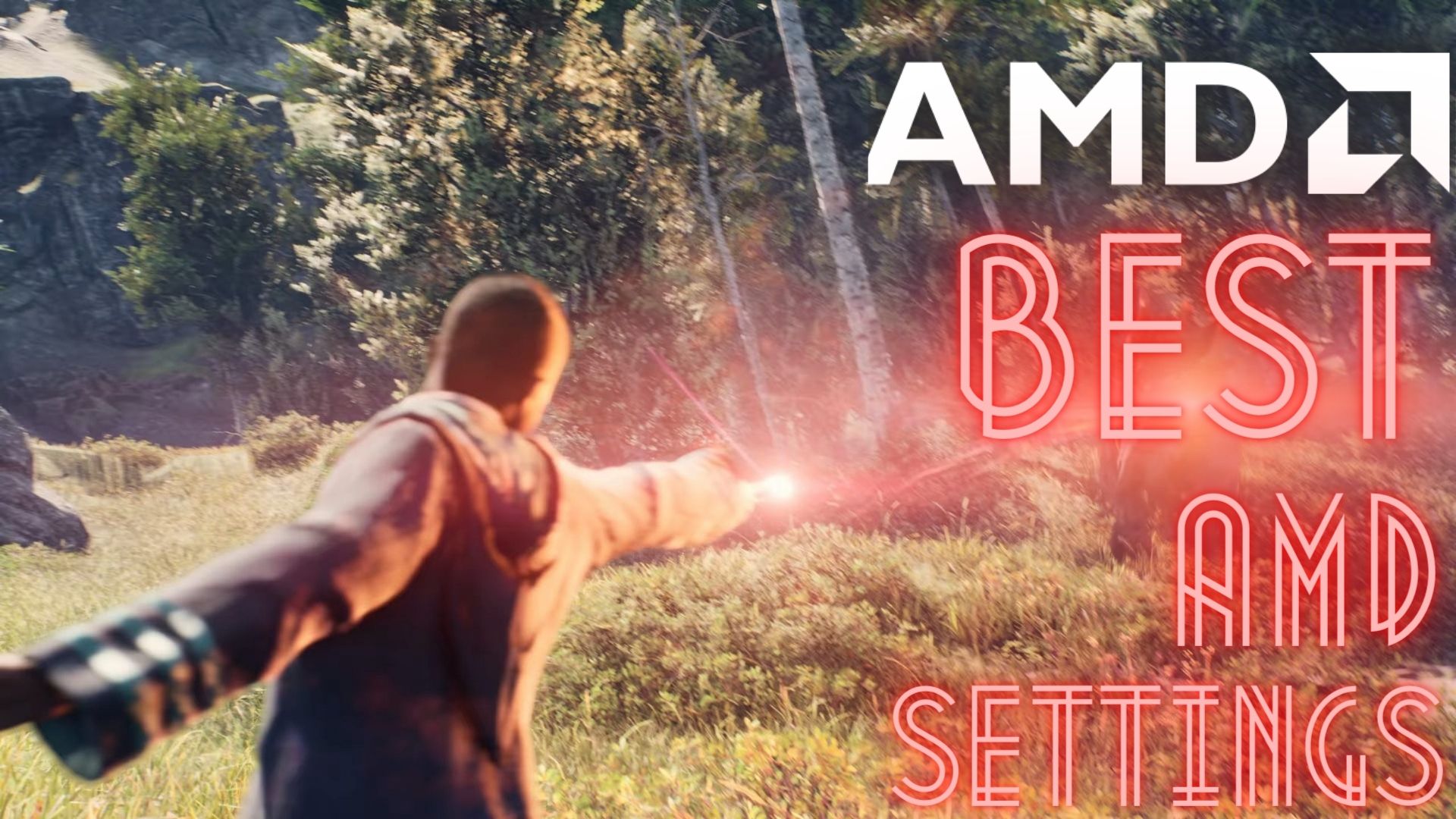
After optimizing Nvidia settings, let’s tend to our Team Red here. Similarly, we’ll be using a combination of the Hogwarts Legacy best settings for the AMD Radeon panel that’ll help you squeeze every bit of performance out of your GPU
Summary of AMD Settings
| Radeon Anti-Lag | Enabled |
| AMD Radeon Chill | Disabled |
| Radeon Boost | Disabled |
| Image Sharpening | Off |
| Radeon Enhanced Sync | Enabled |
| Wait for Vertical Refresh | Always Off |
| Frame Rate Target Control | Disabled |
| Antialiasing | Use Application Settings |
| Antialiasing Method | Multisampling |
| Morphological Antialiasing | Disabled |
| Anisotropic Filtering | Disabled |
| Texture Filtering Quality | Disabled |
| Surface Format Optimization | Enabled |
| OpenGL Triple Buffering | Disabled |
| Reset Shader Cache | Perform Reset |
If you want a detailed guide on Radeon software, we’ve also got a guide on AMD’s best settings guide.
Best Windows Optimizations for Hogwarts Legacy
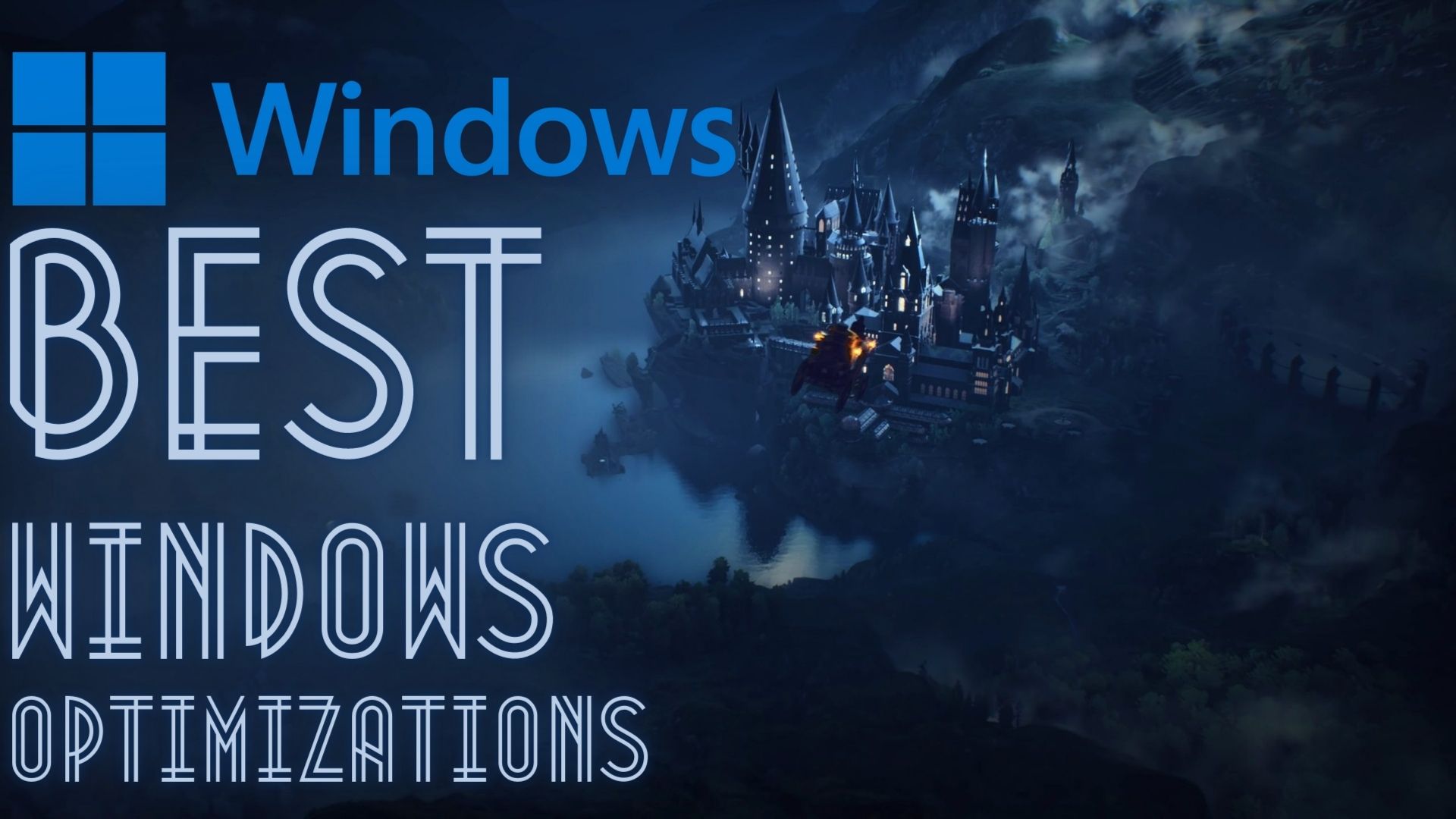
We’ve optimized everything, from the Hogwarts Legacy’s best settings for in-game graphics to GPU-level settings. Now it’s time to perform some Windows tweaks and optimizations that’ll help you gain performance across the board.
- Turn on Game Mode: It’s a great gaming-centric feature that helps direct your PC resources toward the game more efficiently. It even puts any pesky background applications to rest until the game closes. You can enable it by going into Windows Settings > Gaming > Game Mode.
- Disable Useless Applications From Background: Several applications hog your system resources and continue to run in the background while you’re enjoying your games. The best way to free up these resources is to close down these applications through Task Manager.
- Enable Ultimate Power Plan: If you want the best performance in Hogwarts Legacy without any compromises, you’ll need to enable this hidden power mode in Windows. It’ll help take your PC’s performance up a notch by running everything at full tilt. To enable it, simply enter this prompt in Windows Powershell: powercfg -duplicatescheme e9a42b02-d5df-448d-aa00-03f14749eb61.
- Enable Hardware-Accelerated GPU Scheduling: It handles high-priority instructions on the CPU like rendering frames, passes it to GPU and the load is divided while resulting in better performance and more stability. You can enable it by going into Windows Settings > System > Display > Graphics Settings > Change Default Graphics Settings.
Bonus Tweak: Edit Engine.ini File in Hogwarts Legacy
Here’s a bonus performance fix for you. If you’ve been experiencing stuttering in Hogwarts Legacy, you can edit the Engine.ini file and change up the GPU pool size in the game’s save folder.
Here’s how to apply this fix:

- Open up Windows Explorer and go to the following path:
C:\Users\[USERNAME]\AppData\Local\Hogwarts Legacy\Saved\Config\WindowsNoEditor - You’ll find Engine.ini in the WindowsNoEditor Folder > Open it up.
- In the Engine.ini File > Paste the following at the bottom:
[SystemSettings] r.bForceCPUAccessToGPUSkinVerts=True r.GTSyncType=1 r.OneFrameThreadLag=1 r.FinishCurrentFrame=0 r.TextureStreaming=1 r.Streaming.PoolSize=3072 r.Streaming.LimitPoolSizeToVRAM=1 [ConsoleVariables] AllowAsyncRenderThreadUpdates=1 AllowAsyncRenderThreadUpdatesDuringGamethreadUpdates=1 AllowAsyncRenderThreadUpdatesEditor=1
- Once you’ve pasted the code in the Engine.ini file, close the file while saving the changes.
The only thing you need to change is the Steaming PoolSize value according to your GPU’s VRAM. Change it according to the following:
- For 4GB GPU VRAM: 2048
- For 8GB GPU VRAM: 3072
- For 8GB+ GPU VRAM: 4096 – 5120
This aims to reduce the stuttering you’re experiencing in Hogwarts Legacy by letting the game utilize your VRAM more efficiently. However, you can also turn down a few settings in-game alongside this fix to completely eliminate stuttering.
What’s The Performance Like Now?
I’ve personally tested every bit of setting and optimization to figure out the best combo of optimized settings. I was able to maintain a solid 80-95 average FPS with optimized settings on 1440p resolution in the Hogsmeade area. This isn’t surprising considering I was running the game on an RTX 4070.
These optimized settings even let me enjoy Ray Tracing at 60 FPS. However, things got even when I enabled DLSS and Frame Generation which bumped my FPS back to the 90s range. However, I did feel a bit of micro-stuttering after enabling Frame Generation.
Hogwarts Legacy may not be in a perfect state right now, but rest assured, its performance will get better with future patches. Until then, I hope our best settings guide was able to improve your experience with the game.
Thanks! Do share your feedback with us. ⚡
How can we make this post better? Your help would be appreciated. ✍
 Fact Checked By
Fact Checked By 


